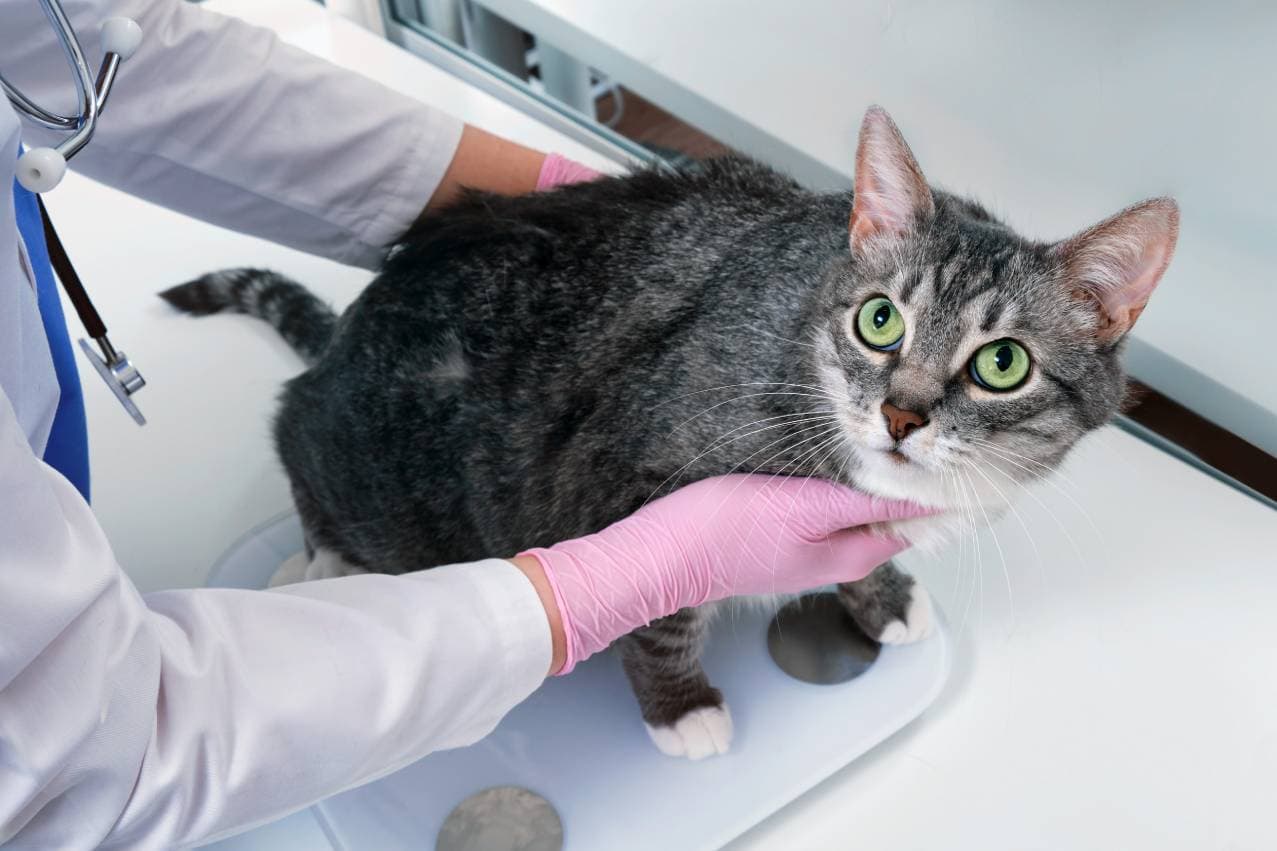Can Cats and Dogs Communicate With Each Other? Animal Understanding Explained
By Lorre Luther
Updated on

Click to Skip Ahead
Cats and dogs are popular companion animals, and many live together in multi-pet households. Cohabiting cats and dogs can be friendly toward each other or prefer a fair bit of distance. These living arrangements are often negotiated settlements, so some kind of communication is going on between the parties, but the question is how since cats and dogs don’t share much in terms of communicative behavior.
The vocalizations and body language cats and dogs use to convey information are fundamentally different. Although cats and dogs don’t share the same language, evidence suggests they understand each other, much like how cats and dogs can communicate with humans.1
How Do Dogs and Cats Communicate?
Dogs and cats rely on scent, vocalizations, and body language to communicate. They indicate how they’re feeling with their ear and tail positions, but similar behaviors can convey drastically different information depending on whether a cat or a dog is doing it!
Differences Between Feline and Canine Body Language
Dogs wag their tails when they’re relaxed, mellow, and okay with being approached, but cats frequently thwack theirs when they’ve reached a limit and are getting ready to go on the offensive. A closed mouth usually indicates a content cat, but the opposite is true for dogs.
Annoyed cats like to move their ears backward. When dogs do the same thing, it’s often a sign of relaxed interest. Dogs typically lie on their backs to invite tummy rubs, but cats sometimes do so when getting ready to fend off a threat; it allows them to use all four paws to keep unwanted attention at bay.

Similarities Between Feline and Canine Body Language
There are also plenty of behaviors that cats and dogs share that make it easier for them to communicate with each other; both animals point their ears forward when they’re feeling good and flatten them when scared, for instance. Both cats’ and dogs’ hair stands on end when they’re stimulated, frightened, and about to move into action. Slow eye blinks mean hello in both the canine and feline worlds.
Meows
Dogs probably don’t need to decipher feline meows, as cats generally don’t meow to communicate with them. Kittens meow to get their mothers’ attention, and adult cats use the vocalization with humans. Dogs tend to growl, and cats like to hiss when they’re extremely angry, and these emphatic vocalizations are hard to misinterpret.
Have There Been Studies Into How Cats and Dogs Communicate With Each Other?

Yes! A study published in PLOS ONE in 2020 examined how cohabiting cats and dogs interacted with each other and their human companions. Researchers asked pet parents with a dog and a cat at home to fill out questionnaires designed to elicit information about how the animals behaved around each other in different situations.
The researchers asked how the animals got along during mealtimes, nap times, and when playing. Information was also gathered about how cats reacted to specific canine body language and vice versa. After crunching the data, the scientists concluded that cats and dogs can understand each other.
Can Dogs Understand Cats?
Yes. Raised tails often indicate dominant behavior in dogs. During the study, when cats with raised tails approached dogs, dogs frequently interpreted their feline buddy’s body language appropriately (as a signal of friendliness) and responded accordingly.

Can Cats Understand Dogs?
Yes. Cats also indicated an ability to read and respond to canine body language during the study. Cats like approaching friends with their tails held high, and the cats in the study could accurately read the tail position as a sign of canine aggression and respond appropriately.
Can Cats and Dogs Understand Each Other?
Not only do dogs and cats appear to understand each other’s body language, but they also respond accurately to the information being communicated. Cats understand and react to canine behavioral clues and vice versa.
Dogs during the study frequently responded with welcoming tail wags to feline gestures of friendliness such as nose touches, tail-up approaches, and bending their front legs to say hello. Cats often responded to canine tail wagging during the study with friendliness, but the behavior carries decidedly aggressive undertones when cats communicate.

Can Cats and Dogs Understand Humans?
Studies suggest that dogs can understand humans’ words, body language, and gestures. They’re also able to grasp and respond to people’s emotions. Dogs have the intellectual abilities of human toddlers. Most can master around 165 words, but super-intelligent dogs can recognize close to 250!
Cats can identify their favorite humans’ voices and can recognize their own names, but they don’t buy into the human idea that pets are required to respond when called.
Cats probably don’t understand human language in all its details, but they can likely recognize words as sounds and link the information to events that happen. It’s why treats are often great motivators for getting cats to respond when called.
Conclusion
Cats and dogs that live together learn how to communicate with each other. Both rely heavily on body language and vocalization, but particular behaviors often have different species-specific meanings. A raised tail usually signals friendliness in cats and aggression or dominant behavior in dogs, for instance.
Yet cats and dogs that live together appear to understand the meaning communicated by the other’s body language and respond to the message being sent. They also share some body language clues, which may make communication between the species easier.
Featured Image Credit: New Africa, Shutterstock














